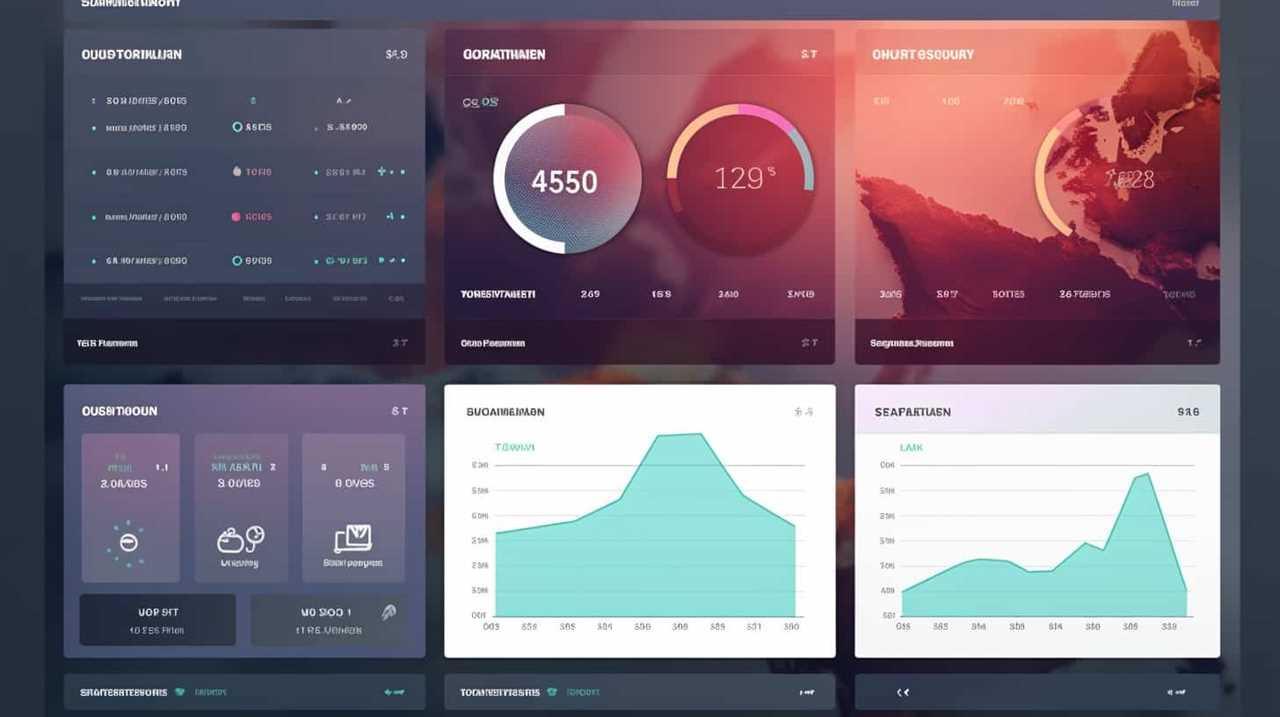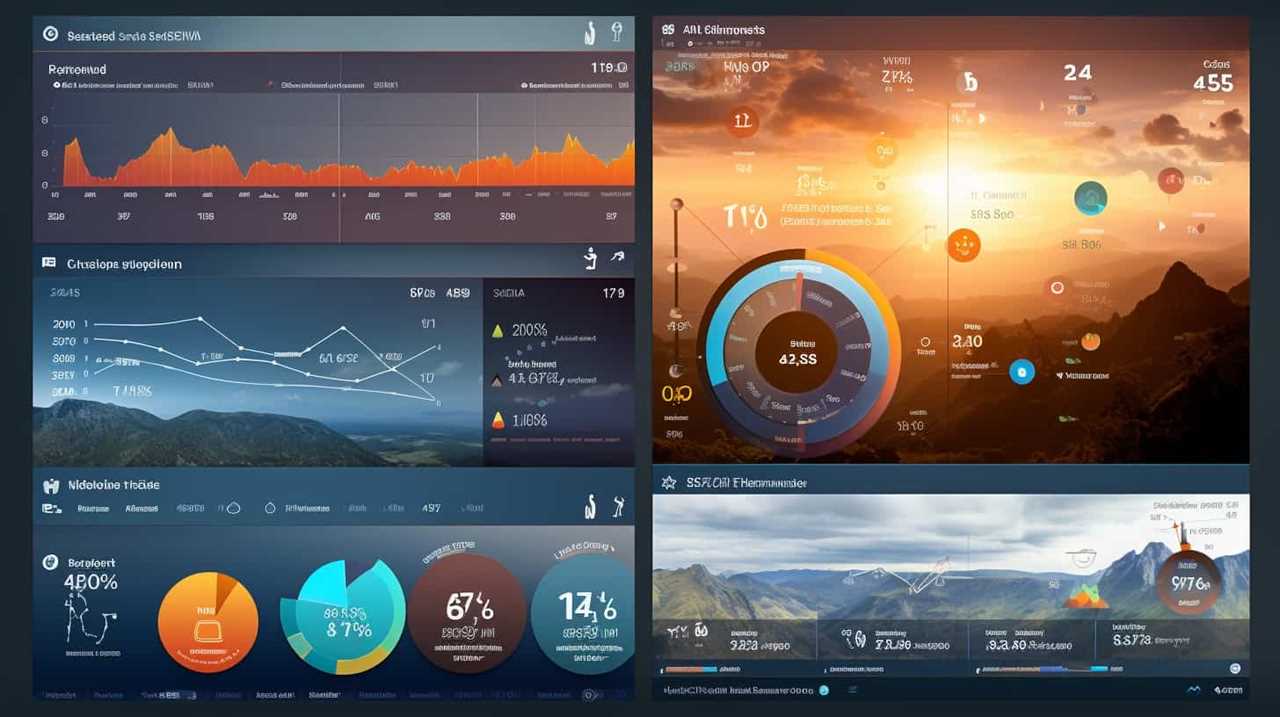We’ve contemplated, whispered, and worried: should H1 consistently be positioned above H2?
In the realm of web design, visual hierarchy reigns supreme. But what about user experience? And the elusive balance of readability?
Let’s explore the SEO implications and the importance of designing for mobile responsiveness.
Join us as we uncover best practices for heading hierarchy. Liberation awaits as we navigate the captivating world of H1 and H2.

Get ready to revolutionize your website’s heading game.
Key Takeaways
- Visual hierarchy, including different heading sizes and contrasting colors, is important for guiding the reader’s attention and enhancing readability and user experience.
- Font size considerations should ensure content legibility and accessibility, with headings being larger than regular text for easy scanning and navigation.
- Proper heading hierarchy has SEO implications, as heading tags influence search engine rankings and visibility, and aid in understanding content for users with visual impairments.
- Designing for mobile responsiveness is crucial, including optimizing touch interaction, loading speed, and ensuring a user-friendly experience on different screen sizes.
The Importance of Visual Hierarchy
When discussing the importance of visual hierarchy, it’s essential to understand how different heading sizes, such as H1 and H2, can play a significant role in guiding the reader’s attention.
One crucial aspect of visual hierarchy is color contrast. By using contrasting colors for headings, we can create a clear distinction between different levels of information and draw the reader’s eyes to the most important elements.
Additionally, typography choices also contribute to effective visual hierarchy. Selecting the right font styles, sizes, and weights can help create a visual flow and emphasize the hierarchy within the content.

Considering User Experience and Readability
Considering user experience and readability, we prioritize the legibility and accessibility of content by carefully selecting heading sizes and maintaining a clear visual hierarchy. Font size considerations play a crucial role in ensuring that our content is easily readable and accessible to all users. According to accessibility guidelines, headings should be larger than regular text to help users quickly scan and navigate through the content. However, it is important to maintain a balanced hierarchy to prevent overwhelming the users with excessively large headings. To illustrate this point, we have created the following table:
| Heading Size | Font Size |
|---|---|
| H1 | 24px |
| H2 | 20px |
| H3 | 18px |
SEO Implications of Heading Hierarchy
To understand the SEO implications of heading hierarchy, we analyze the impact of heading tags on search engine rankings. The way you structure your headings can greatly influence how search engines perceive and rank your content. Here are three key points to consider:
- Impact on search engine rankings: Properly utilizing heading tags, such as H1, H2, and so on, can help search engines understand the structure and hierarchy of your content. This can improve the visibility and relevance of your website in search results.
- Accessibility considerations: Heading hierarchy plays a crucial role in making your content more accessible to all users, including those with visual impairments who rely on screen readers. Clear and logical heading structure makes it easier for these users to navigate and understand your content.
- Transition to designing for mobile responsiveness: When optimizing heading hierarchy for SEO, it’s important to consider how your headings will appear on mobile devices. Designing for mobile responsiveness ensures that your headings remain legible and well-structured across different screen sizes.
Designing for Mobile Responsiveness
Now let’s delve into the subtopic of designing for mobile responsiveness, which continues the discussion from the previous subtopic by addressing the importance of ensuring a user-friendly experience on different screen sizes.
When designing for mobile, it’s crucial to consider touch interaction and optimize loading speed. To provide a seamless user experience, make sure buttons and links are large enough to be easily tapped with a finger. Additionally, prioritize content that’s essential for mobile users and minimize unnecessary elements that may slow down loading speed.

Best Practices for Heading Hierarchy
When determining the best practices for heading hierarchy, we should prioritize clarity, conciseness, and precision in our writing. To ensure that our headings effectively convey the hierarchy and structure of our content, we should consider the following guidelines:
- Font size guidelines: Using a consistent and logical progression of font sizes for our headings helps users easily identify the importance of each section. Typically, H1 is the largest and most prominent heading, followed by H2, H3, and so on.
- Accessibility considerations: It’s crucial to ensure that our headings are accessible to all users, including those with visual impairments. We should use proper HTML markup, such as the correct heading tags, and avoid relying solely on visual cues like font size to convey hierarchy.
- Clear and concise wording: Headings should accurately summarize the content of each section and provide a clear indication of its purpose. Avoid using vague or generic headings that don’t provide meaningful information to the reader.
Frequently Asked Questions
What Are Some Common Mistakes to Avoid When Using Heading Hierarchy?
When organizing headings, it’s important to avoid common mistakes like improper hierarchy. Heading hierarchy is crucial for website usability as it helps users navigate and understand content more easily.
How Can I Optimize My Website’s Heading Hierarchy for Better Seo?
To optimize our website’s heading hierarchy for better SEO, we need to understand the importance of heading structure for website ranking. Making H1 bigger than H2 is just one aspect of it.
Are There Any Specific Guidelines for Using Headings in a Responsive Mobile Design?
When considering font size in mobile heading hierarchy, it’s important to follow best practices for organizing headings in a mobile design. We’ll discuss the importance of font size and share guidelines for a responsive design.

Can I Use Multiple H1 Tags on a Single Webpage Without Affecting Seo?
Using multiple H1 tags for better organization on a webpage doesn’t affect SEO. However, it’s important to style H1 and H2 tags appropriately for a visually appealing design. Let’s explore how!
Is It Necessary to Always Use H1 as the Main Heading on Every Page of a Website?
It’s not necessary to always use H1 as the main heading on every page. Heading hierarchy is important for website accessibility. There are alternatives to using H1, such as using semantic HTML and structuring content properly.
Conclusion
In conclusion, maintaining a proper heading hierarchy is crucial for a visually appealing and user-friendly website.
While there’s no hard and fast rule that h1 should always be bigger than h2, it’s important to establish a clear visual hierarchy to guide users and improve readability.

Additionally, considering the SEO implications and designing for mobile responsiveness are essential for a well-optimized website.
Remember, ‘Less is more’ when it comes to heading hierarchy, ensuring a seamless and enjoyable user experience.










